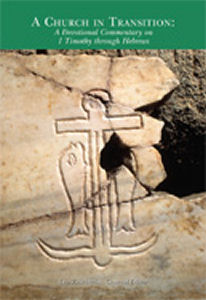
|
Posted September 2, 2005
Book: A Church in Transiton: A Devotional Commentary on 1 Timothy through Hebrews Editor: Leo Zanchettin The Word Among Us Press, Ijamsville, MD, pp. 231 An Excerpt from the Jacket:
An Excerpt from the Book: Meeting the Challenge of Change In the Acts of the Apostles, Luke shows how St. Peter, although already active as a Christian leader and missionary, could hardly bring himself to eat nonkosher foods, to enter the homes of perspective converts if they were pagans, or even to share a common table with baptized persons of gentile origin. Eventually he managed to change both his behavior and his thinking regarding all of these issues, but the fact that this “pillar of the church” needed to work through these stages of conversion highlights how big the challenge was. Luke also reports that in the days after Pentecost, Peter and John continued to attend daily prayers in the Temple in Jerusalem. How could they do that, knowing that such activities were conducted under the authority of the same high priestly families who had successfully plotted Jesus’ death? As late as the fifties Paul, too, let himself be persuaded to take part in a religious vow ceremony in the same temple. Could he have been indifferent to the fact that such activities involved collaborating with the Jewish priests who presided at them? Paul’s missionary accomplishments throughout the gentile world were sometimes seriously compromised by interlopers who tried to cajole gentile converts to adopt traditional Jewish practices – all of which Paul and other church leaders had declared unnecessary. Yet at the same time, Paul himself had insisted that his young co-worker Timothy, who came from a practicing Jewish family, be circumcised before he could join him in full-time evangelization. All of these “New Testament snapshots” show that the early Christian community needed to rethink its own essential character and its relationship with those who also considered themselves “children of Abraham” but rejected Jesus as the Son of God. Emerging from this background, the Letter to Hebrews is best understood as a record documenting a dramatic coming to consciousness. It contains the most explicit witness we have to the theological reasoning that prompted Jewish Christians to reexamine what it meant that Jesus is the priestly mediator of the new covenant. Table of Contents: 1. “In Memory of Me . . .”: Early Christian Eucharistic Celebrations – Fr. Joseph Wimmer, OSA 2. The First Letteer to Timoty: A vital letter at a critical moment – Fr. Jude Winkler, OFM Conv 3. The Second Letter o Timothy: Paul’s Last will and testament – Fr. George Montague, SM 4. The Letter to Titus: To my faithful brother and co-worker – Joe Wimmer 5. The Letter to Philemon: So much more than a personal note – Leo Zanchettin 6. The Letter to the Hebrews: Meeting the challenge of change – Fr. Joseph A. Mindling, OFM Cap |
|
